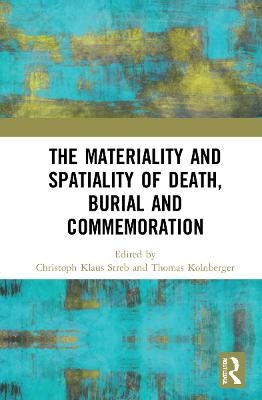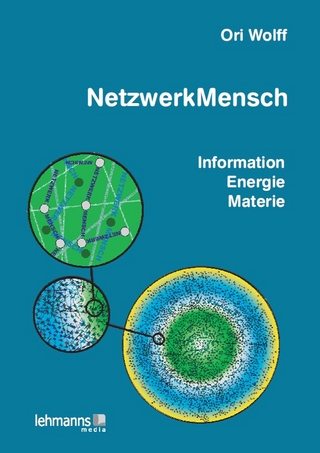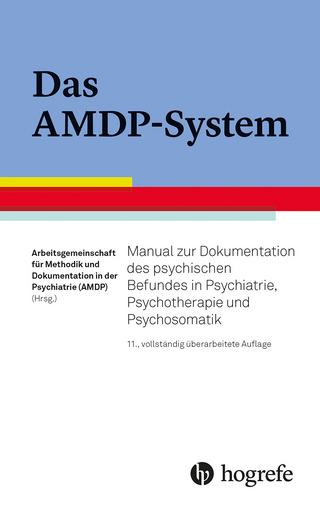
The Materiality and Spatiality of Death, Burial and Commemoration
Routledge (Verlag)
978-0-367-71533-5 (ISBN)
Death, dying and burial produce artefacts and occur in spatial contexts. The interplay between such materiality and the bereaved who commemorate the dead yields interpretations and creates meanings that can change over time. Materiality is more than simple matter, void of meaning or relevance. The apparent inanimate has meaning. It is charged with significance, has symbolic and interpretative value—perhaps a form of selfhood, which originates from the interaction with the animate. In our case, gravestones, bodily remains and the spatial order of the cemetery are explored for their material agency and relational constellations with human perceptions and actions. Consciously and unconsciously, by interacting with such materiality, one is creating meaning, while materiality retroactively provides a form of agency. Spatiality provides more than a mere context: it permits and shapes such interaction. Thus, artefacts, mementos and memorials are exteriorised, materialised, and spatialized forms of human activity: they can be understood as cultural forms, the function of which is to sustain social life. However, they are also the medium through which values, ideas and criteria of social distinction are reproduced, legitimised, or transformed.
This book will explore this interplay by going beyond the consideration of simple grave artefacts on the one hand and graveyards as a space on the other hand, to examine the specific interrelationships between materiality, spatiality, the living, and the dead.
The chapters in this book were originally published as a special issue of the journal Mortality.
Christoph Klaus Streb, PhD, is Director of the Institute of Historical Archaeology of the Palatinate in Germany and alumni of the Faculty of Humanities, Education and Social Sciences (FHSE) at the University of Luxembourg. His current main research project deals with the materiality and spatiality of burial and commemoration during the19th and 20th century in the border region between Luxembourg and Germany. Moreover, he is interested in the materiality and heritage of 20th century conflicts in the German Palatinate. For his research he applies historical-archaeological methodology, focusing on the development of modern identity and ideology. Thomas Kolnberger, PhD, is a historian and research associate at the Faculty of Humanities, Education and Social Sciences (FHSE) at the University of Luxembourg, Institute for History. He was the coordinator of a research project sponsored by the National Research Fund of Luxembourg (FNR): Material Culture and Spaces of Remembrance. A Study of Cemeteries in Luxembourg in the Context of the Greater Region (2015–2018).
Introduction: The materiality and spatiality of death, burial and commemoration
Christoph Klaus Streb and Thomas Kolnberger
1. Post-medieval burial customs in Germany – an archaeological perspective on materiality and spatiality
Hauke Kenzler
2. Charnel practices in medieval England: new perspectives
Elizabeth Craig-Atkins, Jennifer Crangle, P. S. Barnwell, Dawn M. Hadley, Allan T. Adams, Ian Atkins, Jessica-Rose McGinn, and Alice James
3. Material specificity and cultural agency: the mummies of the Capuchin Catacombs in Palermo, Sicily
Natalie Polzer
4. Embalming and the materiality of death (France, nineteenth century)
Anne Carol
5. Ephemeral materiality: a place for lifeless infants in cemeteries
Philippe Charrier and Gaëlle Clavandier
6. The unnaturalness of natural burials: dispossessing the dispossessed
Anna-Katharina Balonier, Elizabeth Parsons and Anthony Patterson
7. Materiality and the body: explorations at the end of life
Thorsten Benkel and Matthias Meitzler
| Erscheinungsdatum | 30.09.2021 |
|---|---|
| Verlagsort | London |
| Sprache | englisch |
| Maße | 174 x 246 mm |
| Gewicht | 408 g |
| Themenwelt | Geisteswissenschaften ► Archäologie |
| Geisteswissenschaften ► Psychologie ► Klinische Psychologie | |
| Medizin / Pharmazie ► Medizinische Fachgebiete ► Psychiatrie / Psychotherapie | |
| Sozialwissenschaften | |
| ISBN-10 | 0-367-71533-3 / 0367715333 |
| ISBN-13 | 978-0-367-71533-5 / 9780367715335 |
| Zustand | Neuware |
| Informationen gemäß Produktsicherheitsverordnung (GPSR) | |
| Haben Sie eine Frage zum Produkt? |
aus dem Bereich


